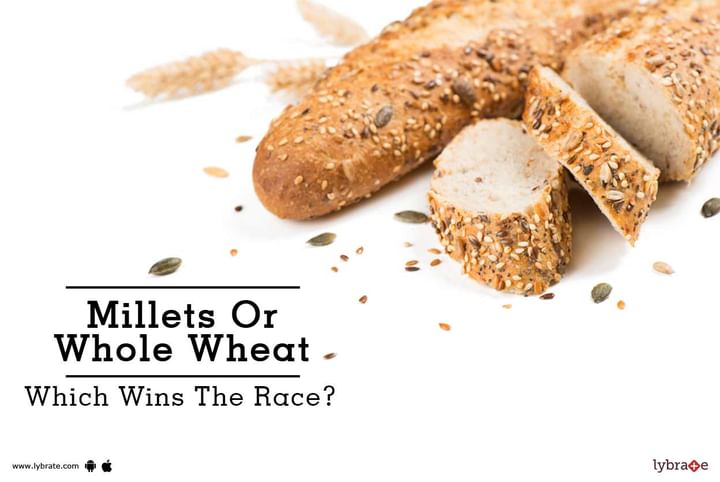Millets Or Whole Wheat - Which Wins The Race?
Millets are a group of highly variable small seed grasses, which grow widely across the world in the form of cereal crops. They contain much higher amounts of fibre along with essential minerals compared to wheat, rice and other cereal grains. Oats, broken kinds of wheat, unpolished rice and wheat based breads are much more healthy options as compared to suji or raw, white rice and white bread. They even contain good quality protein along with a high content of essential amino acids. Not all whole grains have the same type of nutritional value. There are some grains, which are free from gluten, while others like whole wheat are not. There are some, which might contain protein while others could have fibre. Whatever be the items containing whole wheat, there is enough evidence to prove that Millets or whole grains have a number of advantages. Now let us look at the different types of millets and the health advantages they carry:
1. Jowar: Jowar is one of the most popular and a well-researched millet meant for weight loss. Due to its benefits, many prefer it over normal wheat rotis. It is packed with iron, protein and fibre. Researchers have even found that a typical sorghum wax has a rich content of policosanol, which helps to reduce the levels of cholesterol. As it is also free from gluten, hence it is much more preferred over those who cannot consume products made of wheat.
2. Ragi: Ragi is another extremely popular and very commonly consumed millet. Due to the nutrition content in Ragi, it can well be considered as a very good replacement for rice as well as wheat. It is a rich source of calcium and other minerals. It is extremely beneficial on maintaining the level of blood glucose and thus has a positive effect on patients suffering from patients.
3. Bajra: Bajra or Pearl Millet contains iron, which is 8 times higher than what is present in rice. It is also rich in protein, fibre and minerals like calcium and magnesium. Consuming pearl millet helps in easing out the issues related to constipation and any kind of problems associated with digestion. It induces lactation and also helps in the efficient secretion of milk.
4. Kodo Millet: This is kind of millet that has a close resemblance with rice. One can easily digest it and is rich in phytochemicals as well as antioxidants, which help to prevent the occurrence of some major lifestyle-related diseases. It also assists in weight loss. Kodo Millet has even shown to reduce knee and joint pain. This even helps to regularize menstruation in women.
5. Proso Millet: Proso Millet is also rich in protein and low amount of glycemic index carbohydrates. It has a high content of antioxidants and minerals like magnesium, potassium and phosphorous and also helps to prevent conditions like osteoporosis.



+1.svg)
